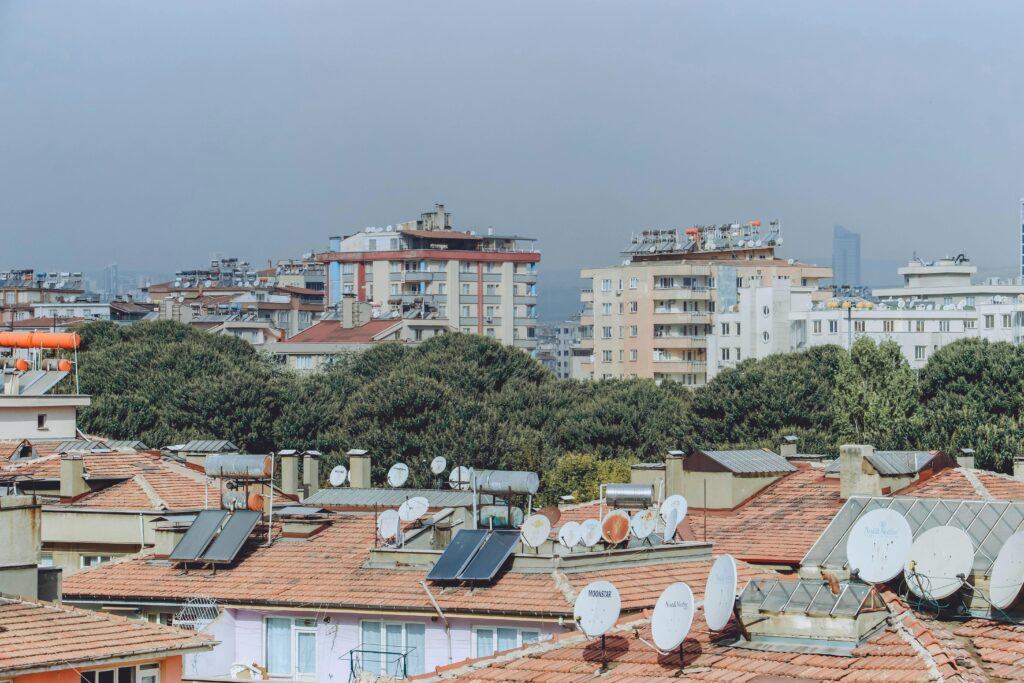Starlink Installation Blog
Articles by Professional Starlink Installers
Starlink Installation Blog
Articles by Professional Starlink Installers
Featured Starlink Installations & LEO Satellite Broadband Internet Articles
Starlink Installation Blog
Articles by Professional Starlink Installers
Featured Starlink Installations & LEO Satellite Broadband Internet Articles

Are you a homeowner attempting to mount a satellite dish on your property, maybe for DirecTV or Starlink installation? Then here’s the disputes between you and your Homeowners Association (HOA). You’re not the only one.
Most residents are not aware of HOA’s restrictions, even their legal rights for satellite dish installation, particularly under the Over-the-Air Reception Devices (OTARD) rule of Federal Communications Commission (FCC). This guide explains the law, clarifies HOA powers, and shows you how to protect your rights without causing conflict.
Note: See below Disclaimer. This articles was written by ProSat Networks team of Starlink installation SMEs.

In 1996, Congress enacted the Telecommunications Act that featured in Section 207 instructing the Federal Communications Commission (FCC) to adopt rules safeguarding consumers’ rights to receive video programming. Subsequently, the FCC adopted the Over-the-Air Reception Devices (OTARD) rule. This regulation restricts both governmental and nongovernmental limitations—like those made by HOAs—on installing devices to pick up signals from direct broadcast satellites (DBS), broadband radio service providers (formerly called MMDS), and television broadcast stations (TVBS). The FCC first implemented the OTARD rule in October of 1996 and has thereafter revised it on multiple occasions in order to explicate its intent and accommodate developing technology.

The OTARD rules ensure that homeowners and tenants can install such devices without unfair restrictions imposed by landlords, homeowners associations, or local government authorities. The rule was intended to facilitate greater consumer access to key communication services.
The rule prevents restrictions that hinder an individual’s ability to install, maintain, or operate an antenna under its protection.

📌 Note: ALL Starlink dishes are <1 meter in diameter (approx. <3.28ft).
Example: Starlink Standard Dish measures (image above):
Height: 594 mm (23.4 inches)
Width: 383 mm (15.07 inches)
Depth: 39.7 mm (1.5 inches)
It does not exceed 1 meter and complies with falls within OTARD size limits and is legally protected for installation on property where the user has exclusive control (e.g., rooftop, balcony, yard of a single-family home).
NOTE: The OTARD rule does not apply to common areas shared by landlords, community associations, or condominium owners. Examples of such areas include the roof or exterior walls of a multi-dwelling building.

1. Community Aesthetic Standards
HOAs prioritize maintaining the neighborhood’s appearance. To maintain a uniform appearance and minimize visual clutter, HOAs can require residents to install satellite dishes in the back of the property, conceal them from street view, and adhere to specific size or color requirements.
2. Installation Within Private Property Boundaries
Install satellite dishes in exclusive-use spaces like a private patio, balcony, or yard. HOAs typically disallow installations on common areas like rooftops, exterior walls, or lawns visible to other homeowners to prevent conflicts and safeguard neighbors’ property rights.
3. Historic Preservation Requirements
If a residence is in a designated historic district, both the HOA and local preservation regulations may have more stringent installation requirements. These can include:
– Prohibiting visible mounting on rooflines or facades
– Requiring non-invasive or hidden installation processes
– The intention is to make sure that current technology cannot undermine the building’s architectural and historic character.
4. Lease Agreement Limits for Tenants
Unless otherwise provided in the HOA, even when the HOA permits satellite dishes, tenants will have to go through their lease agreements, which could contain independent provisions limiting modifications to the property. Landlord approval is usually a precondition for proceeding with any installation.
5. Local and Municipal Regulations
Certain local areas have regulations governing dish size, usually less than 1 meter (39.37 inches) in diameter, for aesthetic or safety purposes. Homeowners need to check their local building code office as well as HOA regulations to find out if and how they may comply with these regulations.
If you feel a rule imposed upon your satellite dish or antenna installation is violating your rights as per the FCC’s OTARD rule, then find a resolution immediately with the entity that is implementing the restriction—the your Homeowners Association (HOA), landlord, or even local government department.
If you do not succeed, you can file a Petition for Declaratory Ruling with the Federal Communications Commission (FCC) or in a court.
What to Put in Your Petition:
A concise description of the restriction and how it infringes on your rights such as:
1. Names and contact details of all parties concerned.
2. Please provide a copy of the precise restriction or rule that you are contesting.
3. All correspondence or documents pertaining to the matter in dispute.
A Proof of Service form indicating that you delivered a copy of the petition. And include a supporting papers to the enforcing party on the same day you filed it. This should contain names, addresses, date served, and delivery method (e.g., mail, email, or hand delivery).
How to File:
1. Paper Filing: Mail the one original and two copies of your petition to:
Federal Communications Commission
45 L Street NE
Washington, DC 20554
Attn: Media Bureau – Policy Division
2. Electronic Filing: Send an email with your petition and attachments to: OTARD@fcc.gov
Important Note: Once you submit your petition to the FCC for review, you are generally free to continue using your antenna, except when the limitation is due to real safety issues or historic preservation regulations.
Choose professional installation to ensures that your Starlink satellite internet system is optimally installed and OTARD-compliant. Whether you live in a gated subdivision or rental home, ProSat Network will get your Starlink installed properly.
REACH OUT TO PROSAT NETWORKS TEAM OF STARLINK INSTALLATION SMEs FOR A COMPLIMENTARY STARLINK INSTALLATION SERVICES
CONSULTATION TODAY!
CALL 1-888-973-9855
Disclaimer: This is NOT a legal document but an interpretation of the OTARD rules and regulations. It should NOT be considered legal advice and should NOT be acted on solely based on this article. We recommend you seek local legal counsel and DO NOT rely solely on the contents of this article. This is purely meant to be informative.
This article is not a legal document but has been gathered from various sources, predominantly the FCC’s website: https://www.fcc.gov/media/over-air-reception-devices-rule
Thank you for reading our Starlink installation articles.